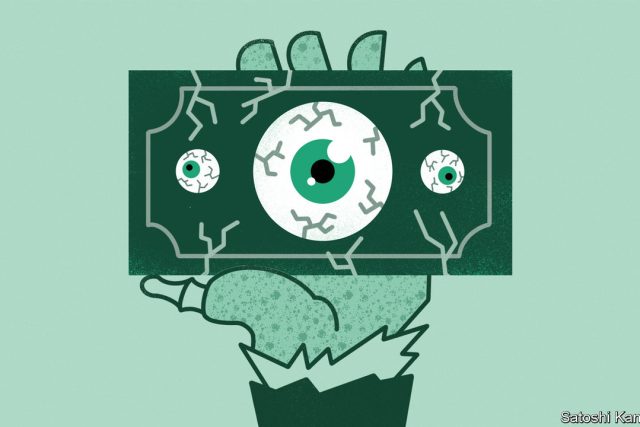Burger King in Paris now accepts Bitcoin, and Ralph Lauren has also recently integrated crypto payments and NFT gifts. However, these cases are the exception rather than the rule. Despite all the advantages that crypto can bring businesses, the merchant adoption rate is still at a low level. So what can we do to facilitate it?
Here, Dmitry Ivanov, CMO at the crypto payments ecosystem CoinsPaid, and an expert in crypto adoption, highlights barriers to merchant crypto adoption.

Demand for crypto payments is rising among both businesses and consumers. Considering the growing trend of crypto payrolls among enterprises, remote workers, and developing nations, digital asset payments might help businesses reach a new audience that is actually willing to spend coins to cover everyday expenses.
As another opportunity for retailers, cryptocurrency shoppers are a crowd with underserved demands in this field, with 40.5 per cent of respondents of CryptoRefills‘ research indicating the lack of merchants and brands that accept crypto as their top problem in 2022.
That said, as part of a major global trend, most enterprises are looking forward to accepting crypto from their customers in the future.
According to a Deloitte study polling 2,000 senior executives at US retail organisations, 85 per cent of the respondents expect digital asset payments to be ubiquitous in their industry in five years. At the same time, another 85 per cent of the participants consider cryptocurrency integration either ‘high priority’ or ‘very high priority’, while about 75 per cent reported plans to accept stablecoin and crypto payments within the next 24 months.
However, major market challenges significantly slow down enterprise crypto adoption, presenting new barriers for merchants. For most of this article, I’ll be relying on my team’s research to illustrate these problems and find a potential solution.
High volatility
The high volatility of cryptocurrencies is considered among the top barriers to their payment adoption. Indeed, crypto is among the most volatile asset classes out there. Based on this chart, Bitcoin’s one-year volatility is three times larger than oil’s and nearly 13 times higher than that of gold.
Since cryptocurrencies are susceptible to extreme price swings in short periods of time, they pose increased risks for merchants. Even before receiving the payment from the customer, they could lose 5-10% (or even more) of the order value on a day when the market is highly volatile.
Fortunately, this challenge can be easily tackled with stablecoin payments. As their value is pegged to the price of major fiat currencies like the USD and EUR, stablecoins offer an excellent way for both merchants and their customers to minimise the negative impacts of volatility.
Stablecoins can also come in handy during the current bear market conditions. Our Q4 2022 report is the perfect example of this phenomenon, in which my team identified a 488% YoY growth of USDT transactions on the platform in 2022. Such interest in the stablecoin was due to market dynamics, as industry players tend to convert their digital asset positions into stablecoins after a more significant fall.
Expensive blockchain fees
One of the major downsides of top decentralised blockchain networks is limited scalability. Consequently, they become congested during bull markets and periods of rising user activity, exponentially increasing transaction fees to levels unsuitable for many consumers and businesses.
For example, the average ETH transaction fee typically ranged between $25 and $60 during the peak of 2021’s bull market, which made the Ethereum blockchain unviable for small payments. This presents a major problem for both retailers and their customers, as most consumers would be uncomfortable with paying an additional 20 per cent on top of their order value just to use digital assets as a payment method.
Not mentioning the dissatisfaction that may occur for merchants if they have to wait even a minute of extra time receiving a transaction. Instead, they will leave their coins untouched in their wallets and use fiat for shopping.
As I see it, merchants affected by the issue can integrate cryptocurrency payment methods across multiple blockchains. In addition to Bitcoin and Ethereum, it is also a good idea to support digital asset transactions via high-throughput networks like Ethereum layer-two (L2) chains, Solana, Tron, and Binance Smart Chain. While this provides more choices for customers, they also have access to cost-efficient and fast alternatives to settle their payments.
Lack of compliance tools
Besides the above two, merchants are facing another challenge with crypto payments: a lack of proper compliance solutions. The lack of regulatory framework in the crypto sector doesn’t assist in this matter. As it may be unclear which party is responsible for payment compliance and merchants don’t have access to the automated systems they could use to report transactions to regulators, they are assumed to do the whole process manually.
Consequently, for a merchant that accepts hundreds of crypto transactions every day, this means having to expend additional valuable resources to comply with regulations. The good news is that outsourcing this process can easily solve the issue, especially considering that multiple services on the market offer automated transaction reporting and compliance management features.
Is it a must for every merchant to accept crypto now?
Crypto payments can help merchants scale their businesses, attract new customers, cut their costs, and reduce the risks of chargebacks. However, mainstream adoption won’t come until market players manage to tackle several challenges, such as volatility, gas fees, and automated compliance.
While the market still has plenty of room to mature, retailers already have access to the solutions that can remove most of the barriers to crypto adoption. In the future, cryptocurrency adoption and education among consumers will likely be at high enough levels that it will become a must for every business to accept digital asset payments.



The Most Read
Сryptocurrencies
Bitcoin and Altcoins Trading Near Make-or-Break Levels
Financial crimes
Thieves targeted crypto execs and threatened their families in wide-ranging scheme
Financial crimes
Visa Warning: Hackers Ramp Up Card Stealing Attacks At Gas Stations
News
Capitalism is having an identity crisis – but it is still the best system
Uncategorized
The 73-year-old Vietnamese refugee is responsible for bringing Sriracha to American consumers
Uncategorized
Electric Truckmaker Rivian, Backed By Amazon, Ford, Raises Whopping $1.3 Billion